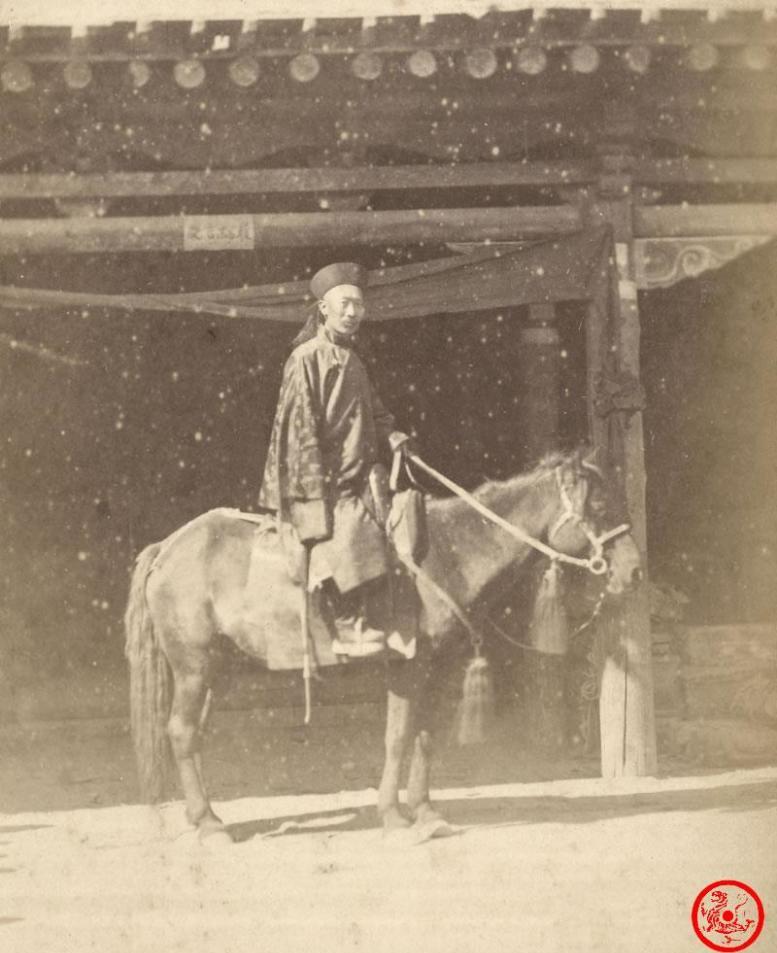From 1874 to 1875, the Russian photographer Adolf Erazmovich Boiarskii followed a scientific and trade expedition to China, during which he took a number of old photographs recording the people and social outlook of the late Qing Dynasty, which he sorted out and shared with everyone.

The photographer did not record the name of this person, if he was indeed the viceroy of Hubei, it was Li Changle. Born in the Huai Army, Li Changle made meritorious contributions in the war to pacify the Taiping Heavenly Kingdom and the Twist Army, and was promoted many times, serving as the Viceroy of Hubei from 1871 to 1879, stationed in Xiangyang.
Yangloudong is located in Puxi (now Chibi City), which is the traffic point of the Xiang'e junction, the origin of "Songfeng Tea", known as the "Hometown of Brick Tea". During the Jiajing period of the Ming Dynasty, the tea industry was quite developed, with more than 200 tea estates, and tea was exported overseas through Hankou in the late Qing Dynasty.
This village is surrounded by mountains and water, and the feng shui is excellent. On the hill is a small temple built in the Ming Dynasty, surrounded by many small houses. I wonder where this Jiguanshi Village is located? There is a town of Jiguanshi on the Yangtze River in Chongqing today, which may be the village photographed by the photographer, but he has mistaken the provincial territory.
Qing Dynasty officials traveled, from the governor to the prefecture and county officials, there was a certain system of honor guard, and the retinue and so on held avoidance, silence, official title plates, iron chains, wooden sticks, black sheath whips, golden melons, tail guns, black fans, yellow umbrellas, etc., in addition to "sounding the gong to open the road" to remind the people to avoid. For example, prefecture and county officials travel to play three stick gongs and seven stick gongs, which means "quick avoidance" and "military and civilian people and so on"; the governor travels to play thirteen stick gongs, which means "civil and military officials and soldiers and civilians and others are avoided".
This gate is not magnificent, and there are three plaques hanging in the middle, two of which are clearly written, namely "The Teacher of Kindness" and "Honest and Upright". Among them, the "Teacher of Mercy" is the code of conduct for local officials to hear cases in ancient times, "but the master who is loyal to mercy has the fact that he has the truth of breaking the prison and causing punishment." If we are in and out of peace, we must think of the innocent; if we are too righteous and too kind, we must be intolerant."
Built of stone, the archway spans a deserted street that is partially damaged and looks historic. The photographer recorded that this archway was built in the Han Dynasty, which I think is unreliable.
Zuo Zongtang spent 15 years in the northwest and made outstanding military achievements, ensuring the integrity of China's northwest territory. His troops, with the Lao Xiang Army as the main force, plus the Songwu Army in Henan, the Shu Army in Sichuan, the Eight Banner Army and the Green Battalion in Shaanxi and Gansu, totaled more than 150 battalions of horses, infantry and artillery, totaling about 70,000 to 80,000 people. The artillery unit in the photo is clean and has strong combat effectiveness.
After Zuo Zongtang became the governor of Shaanxi and Gansu, in order to meet the demand for weapons, he successively set up the Xi'an Manufacturing Bureau and the Lanzhou Manufacturing Bureau to produce guns and shells, and also transformed the original split-mountain cannons and gun mounts, which played a major role in defeating the enemy and winning victory.
Dressed in cloth and trousers, and with a traditional three-inch golden lotus at her feet, this woman may face a lot of inconvenience and even bring her a lot of pain when she undertakes heavy labor.
These beggars are homeless, ragged, sleepy, and pitiful. In the late Qing Dynasty, Beijing had several beggar gathering places, such as the Houmen Bridge outside the Di'an Gate, the Zhengyang Bridge outside the Qianmen Gate (also known as the "Beggars Bridge" because there were so many beggars), and the flyover.